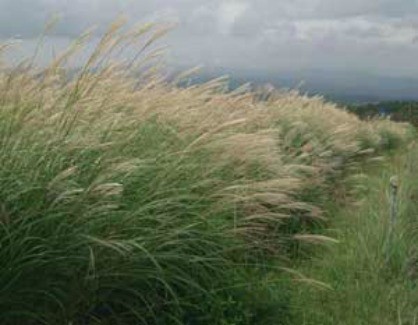
perennial
spring or summer
height varies from compact mounds to tall screens to spreading mats
full sun to partial shade
all types; most grasses are adaptable to soggy, dry or nutrient poor sites where other plants will not grow
depends on variety
depends on grass type
a wide variety of colorful flower spikes including maroon, red, pink, silver, white, yellow or beige.
various textures and colors including greens, blues, reds, whites, yellows and variegated blades; seed heads range from inconspicuous to dramatic feathery plumes
seeds
fillers, screens, borders, backdrops, ground covers, winter interest, container plants, ornamental accents and dried arrangements
Growing requirements vary by grass type. Care should be taken to provide adequate space for growth, without allowing grasses to take over your garden. Grasses should be spaced as far apart from other plants as they are tall. Set plants into prepared holes so that root balls rest just below the surface. Holes should be twice as deep as the root ball. Add compost before filling.
Grasses experiencing winter dieback can be cut back to within a few inches of the ground in early spring before new growth begins. Evergreen grasses generally do not need trimming or pruning.

Add your voice! Click below to comment. ThriftyFun is powered by your wisdom!